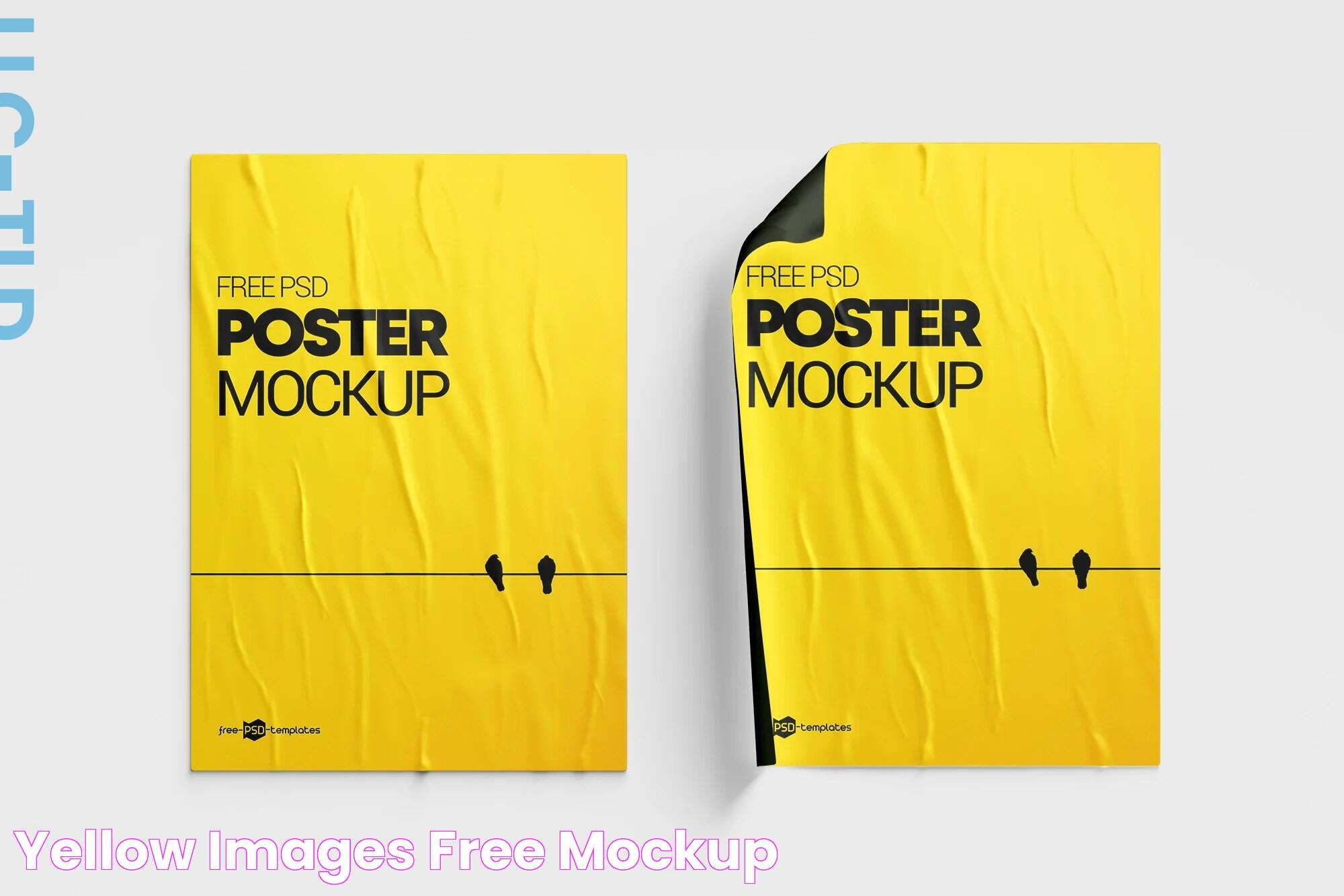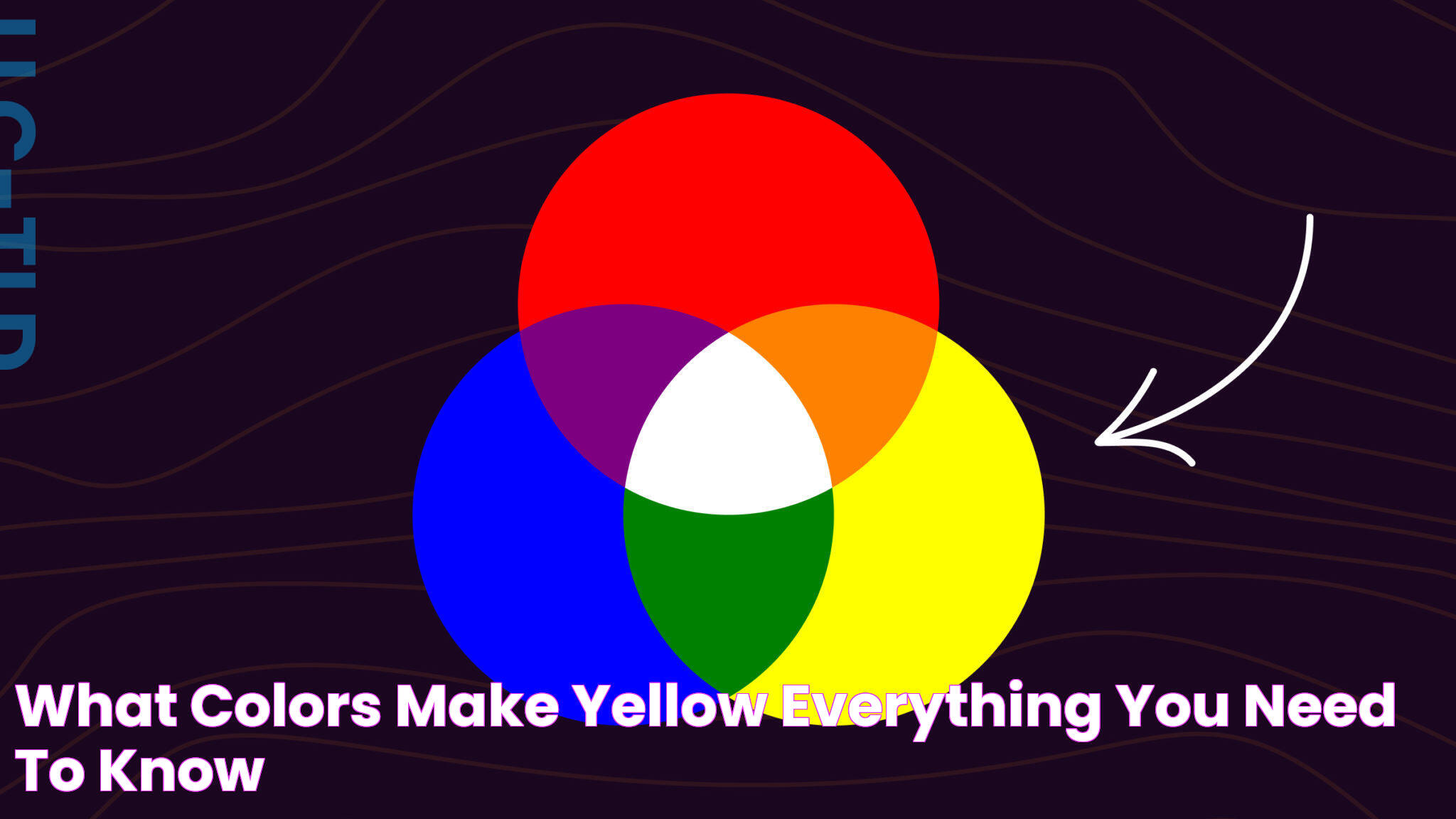Yellow is a vibrant, cheerful color that has been the symbol of happiness, energy, and warmth for centuries. Whether you're mixing paints for an art project, dyeing fabric for a craft, or simply trying to replicate the perfect shade in digital design, understanding "how can I make yellow" is essential for achieving the results you desire. This guide delves deep into the science, techniques, and creative possibilities of making yellow, ensuring you have all the knowledge you need to master this captivating color.
From blending primary colors to experimenting with natural dyes, the process of making yellow opens up a world of creativity. While yellow is one of the primary colors, there are several ways to create variations and explore its many shades. Whether you’re an artist, designer, or hobbyist, learning the nuances of mixing colors and understanding the properties of yellow will elevate your projects and make your work stand out.
This comprehensive guide is designed to answer all your questions about "how can I make yellow," covering everything from the science behind color theory to practical step-by-step instructions. So, grab your brushes, paints, or design software, and let's unlock the endless possibilities of yellow together!
Read also:Maximizing Efficiency The Role Of Ev Per Joule In Energy Metrics
Table of Contents
- What is Yellow?
- How to Make Yellow with Primary Colors?
- Can You Make Yellow with Secondary Colors?
- How to Adjust the Shade of Yellow?
- Natural Methods to Create Yellow
- Making Yellow in Digital Design
- How to Create Yellow in Painting?
- What Are Popular Yellow Shades?
- How to Make Yellow Dye?
- Yellow in Food Coloring
- How to Make Yellow Stand Out?
- Psychology and Meaning of Yellow
- Common Mistakes When Making Yellow
- Frequently Asked Questions
- Conclusion
What is Yellow?
Yellow is one of the primary colors in the RGB (red, green, blue) and RYB (red, yellow, blue) color systems. It sits between green and orange on the visible spectrum of light, with a wavelength range of approximately 570–590 nanometers. Its bright and luminous nature makes it one of the most eye-catching colors, often associated with sunlight, positivity, and vitality.
How to Make Yellow with Primary Colors?
In traditional color theory, yellow is considered a primary color, meaning it cannot be created by mixing other colors. However, in additive color mixing (used in digital screens), yellow is produced by combining red and green light. This process highlights the difference between subtractive (physical mediums like paint) and additive (light-based) color systems.
Steps for Mixing Yellow in Additive Color Systems
- Set up a digital design tool or software that supports RGB color mixing.
- Combine equal intensities of red and green light to form yellow.
- Adjust the brightness or saturation to refine the shade of yellow.
Can Yellow Be Mixed in the Subtractive System?
Unlike additive systems, subtractive color mixing does not allow for the creation of yellow, as it is a foundational primary color. Artists working in traditional mediums must rely on pre-made yellow pigments or dyes.
Can You Make Yellow with Secondary Colors?
In the subtractive color system, secondary colors like green, orange, and purple cannot be used to create yellow. However, slight variations of yellow can be achieved by blending yellow with other secondary or tertiary colors to create unique custom hues.
How to Adjust the Shade of Yellow?
Adjusting the shade of yellow involves altering its brightness, saturation, or tone. This can be achieved by mixing it with other colors or modifying its properties digitally.
Brightening or Darkening Yellow
- Add white to create a lighter, pastel yellow.
- Add black or a complementary color like purple to darken yellow.
Creating Warm or Cool Yellows
For a warmer yellow, mix it with a small amount of red or orange. To create a cooler yellow, blend it with green or blue. Experimenting with these combinations can help you achieve the perfect balance for your artwork or design.
Read also:Mastering The Art Of Eye Shadows For Every Occasion
Natural Methods to Create Yellow
Yellow can also be made using natural substances. These methods are often used in traditional art, fabric dyeing, and eco-friendly crafts.
Common Natural Yellow Sources
- Turmeric: This spice produces a vibrant yellow dye.
- Saffron: Used for both cooking and dyeing, saffron yields a rich golden-yellow hue.
- Marigold Flowers: Petals can be boiled to extract a warm yellow pigment.
Steps to Create Natural Yellow Dye
- Gather the natural source (e.g., turmeric or marigold petals).
- Boil the material in water to extract the color.
- Strain the mixture and use it as a dye for fabric or paper.
Making Yellow in Digital Design
Creating yellow in digital design tools involves manipulating the RGB or HEX color codes. Yellow is represented by the following:
| Color Model | Representation |
|---|---|
| RGB | (255, 255, 0) |
| HEX | #FFFF00 |
Using these values, you can create standard yellow. For variations, adjust the intensity or blend with other colors.
How to Create Yellow in Painting?
In painting, yellow is typically a starting point as it is a primary color. Artists often use pre-made yellow paints but can adjust the shade or tone by mixing it with other pigments.
Tips for Mixing Yellow Paint
- Use a palette knife for even blending.
- Test the shade on a small section before applying it to your main canvas.
What Are Popular Yellow Shades?
Yellow comes in a variety of shades, each with unique characteristics. Some popular options include:
- Lemon Yellow: A bright, zesty hue.
- Golden Yellow: A warm, rich tone.
- Mustard Yellow: A muted, earthy shade.
How to Make Yellow Dye?
Making yellow dye involves using both natural and synthetic sources. The steps for creating a natural yellow dye are outlined above, while synthetic dyes can be purchased and mixed directly.
Yellow in Food Coloring
Yellow food coloring is often made from natural ingredients like turmeric, saffron, or annatto. It is widely used in baking, cooking, and decorating to add a pop of color to dishes.
How to Make Yellow Stand Out?
To make yellow stand out in your designs, consider using contrasting colors like purple or deep blue. These colors enhance the vibrancy of yellow and draw attention to it.
Psychology and Meaning of Yellow
Yellow is often associated with happiness, optimism, and energy. It is commonly used in marketing and branding to evoke positive emotions. However, excessive use of yellow can sometimes feel overwhelming, so balance is key.
Common Mistakes When Making Yellow
Some common mistakes include:
- Overmixing, which can dull the color.
- Using the wrong complementary colors.
- Failing to test the shade before application.
Frequently Asked Questions
1. Can yellow be created by mixing paints?
In traditional painting, yellow is a primary color and cannot be created by mixing other paints.
2. What colors make yellow in digital design?
In digital design, yellow is made by combining red and green light in the RGB color system.
3. What natural materials produce yellow dye?
Materials like turmeric, saffron, and marigold flowers are commonly used to create natural yellow dye.
4. How can I make yellow warmer or cooler?
To make yellow warmer, mix it with red or orange. To make it cooler, mix it with green or blue.
5. What is the HEX code for yellow?
The HEX code for standard yellow is #FFFF00.
6. How do I make pastel yellow?
To create pastel yellow, simply mix yellow with white to lighten the shade.
Conclusion
Yellow is a versatile and uplifting color that can be used in countless ways across art, design, and everyday applications. By understanding "how can I make yellow" using various methods, from natural dyes to digital tools, you can unlock endless creative possibilities. Whether you're mixing paints, working on a digital project, or dyeing fabric, the tips and techniques in this guide will help you achieve the perfect yellow for any purpose. So go ahead, experiment, and let the brilliance of yellow brighten your creations!


